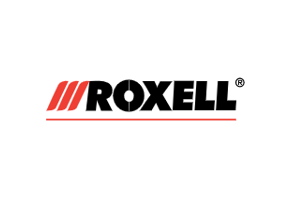



Animal-friendly beak treatment. Research results: Production
A new strategy for animal-friendly beak treatments in Broiler Breeders pt.4Part of Series:
< Previous Article in Series Next Article in Series >
Production
The results during the production period
Every rearing group stayed together and each moved to a separate production house.
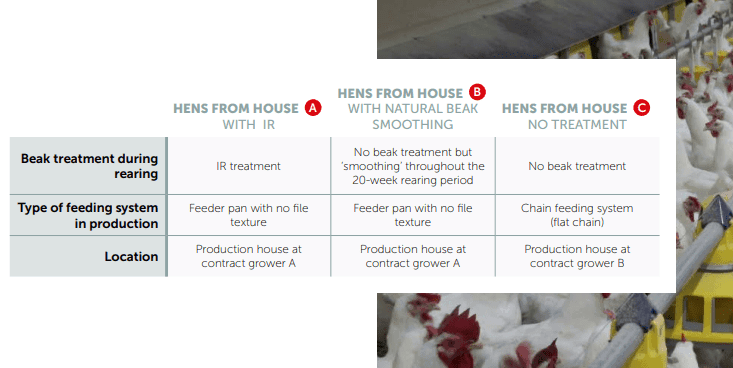
1. Mortality rate
In spite of the fact that the males were slightly too mature when introduced to both houses (grower A), this primarily caused problems with hens from House A with IR. The males caused stress, which resulted in more feather pecking. The hens from House A with IR had sharper beaks, which resulted in increased deaths. This did not affect the mortality rate of hens from house B – with Natural Beak Smoothing.
Conclusion: there is a low mortality rate among hens from house B – with Natural Beak Smoothing compared with hens from house A with IR.
Between week 21 and week 56:
- Hens from house B – NBS: 4.24 % mortality rate
- Hens from house A – IR: 6.28 % mortality rate

2. Egg production
Conclusion: House B – with Natural Beak Smoothing had the best uniformity at the end of the rearing period. This resulted in the hens starting to lay eggs earlier and being more productive in the other weeks. During a 6-week period, the laying percentage is above 85 %.
Between week 21 and week 56:
- Hens from house B – NBS: 87.1% laying percentage 168.6 eggs per hen
- Hens from house A – IR: 85.5% laying percentage
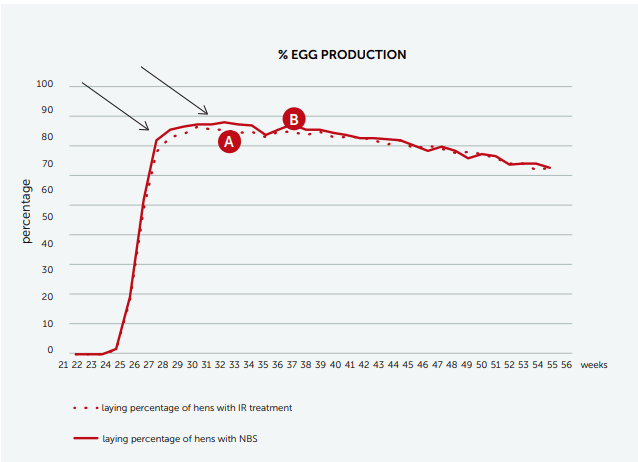
3. Fertility and day-old chicks
Conclusion: hens from house B – with Natural Beak Smoothing laid more fertile eggs. At the end of the production period (week 64), a hen from house B has produced 8 extra day-old chicks. In total, for an entire flock that amounts to 78 300 extra day-old chicks.
Between week 21 and week 52:
- Hens from house B – NBS: 94.86% fertile eggs 126.1 day-old chicks per hen
- Hens from house A – IR: 93.80% fertile eggs 120.14 day-old chicks per hen
At week 64:
- Hens from house B – NBS: 155.20 day-old chicks per hen
- Hens from house B – IR: 147.86 day-old chicks per hen

4. Continued evolution of the beak
In all three production houses, the beaks continued to grow and the tips became sharper, which meant a decline in the beak scores. A feeder pan with Natural Beak Smoothing in production would continue to keep the beak growth under control.
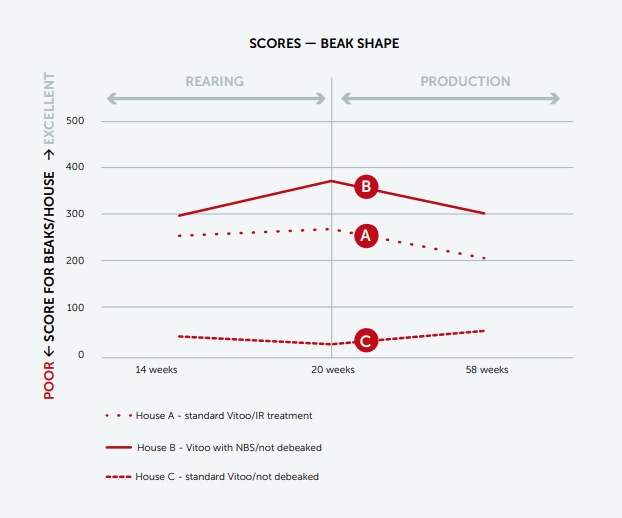
Conclusion: hens from house B – with Natural Beak Smoothing continue to gain high scores for beak shape in the production phase. The head start they got in the rearing phase with Natural Beak Smoothing continues to benefit them. The beaks of the hens with IR treatment break off more frequently due to the formation of scar tissue. The chain feeding system in house C hardly improved the score for the beaks.
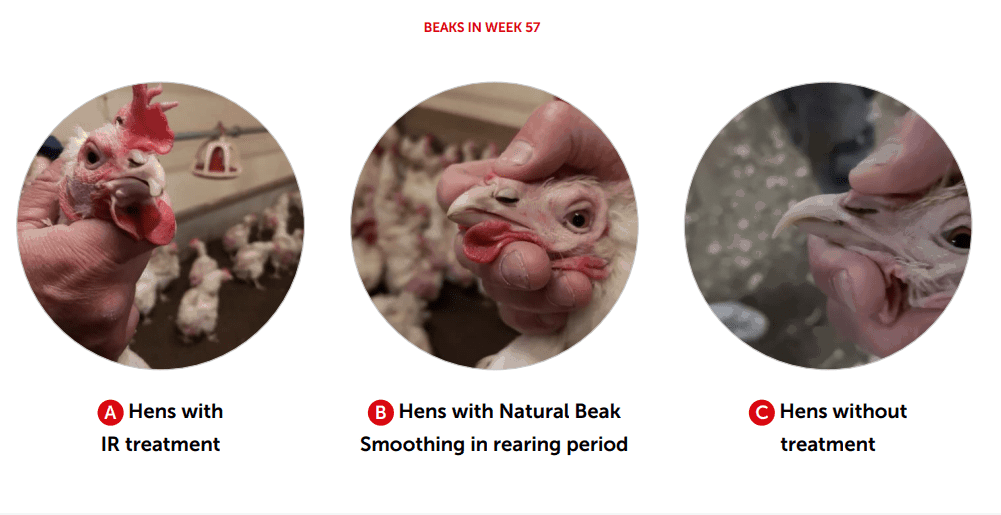
Natural Beak Smoothing is a new, additional factor that helps bring about positive results in the production phase, alongside many other technologies. You gain greater control over the following results:
- less mortality
- laying percentage of 80 % is achieved earlier
- average laying percentage per flock is higher
- the laying percentage stays above 85 % for 6 weeks
- more fertile eggs and day-old chicks
Return on investment in 1 year
Return on investment after one year and higher returns
The investment:
Test results show that an investment in a Vitoo pan feeding system with Natural Beak Smoothing is recovered in one year. Just the savings on
feed and debeaking were enough to justify an investment in an animal-friendly beak treatment. Three quarters of the annual savings are the result of feed savings and one quarter is due to stopping beak treatments. Feed savings of 6.3 grams/hen/day in the rearing phase seem negligible, however the figure per house on an annual basis is significant: 22 tonnes (24 US t) of feed savings. These savings made all the difference in the calculation of the return on investment time frame for Natural Beak Smoothing during the test in France.
There is also the fact that the investment in Natural Beak Smoothing is not an annually recurring cost. The effect of the file is guaranteed for at least 10 years, as long as it is used normally and cleaned correctly. During wear monitoring, we see that the sharpness does not deteriorate quickly, which leads us to believe that the file will last even longer.
Natural Beak Smoothing has more than proved itself after one flock. The research results demonstrated that choosing Natural Beak Smoothing offers many benefits for animal welfare, as well as the bottom line.







